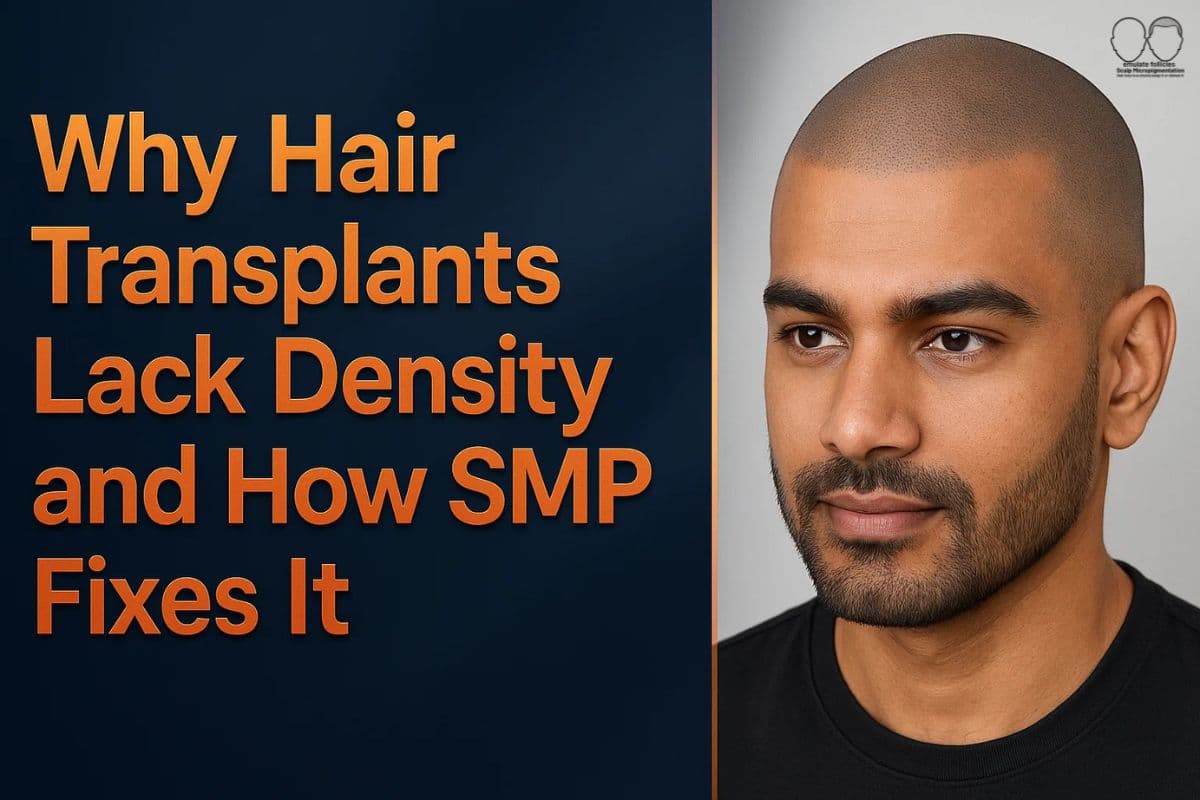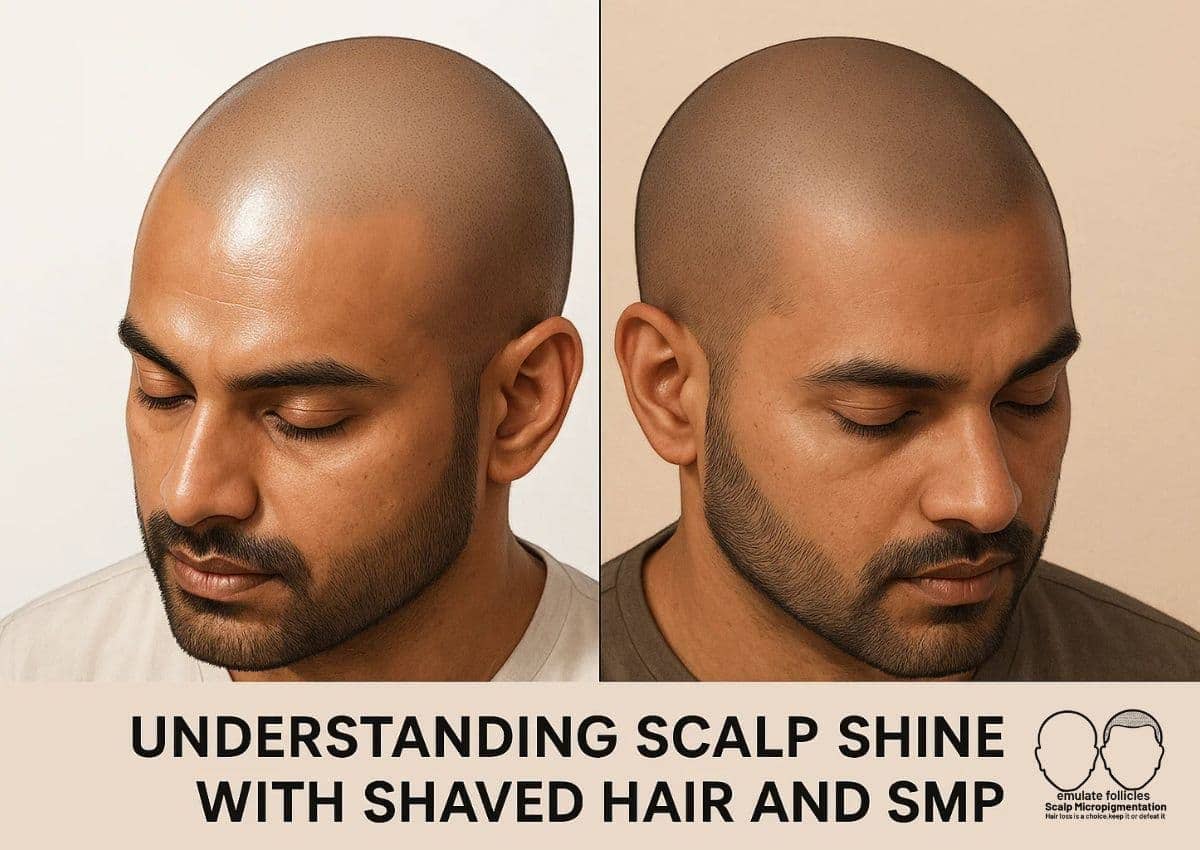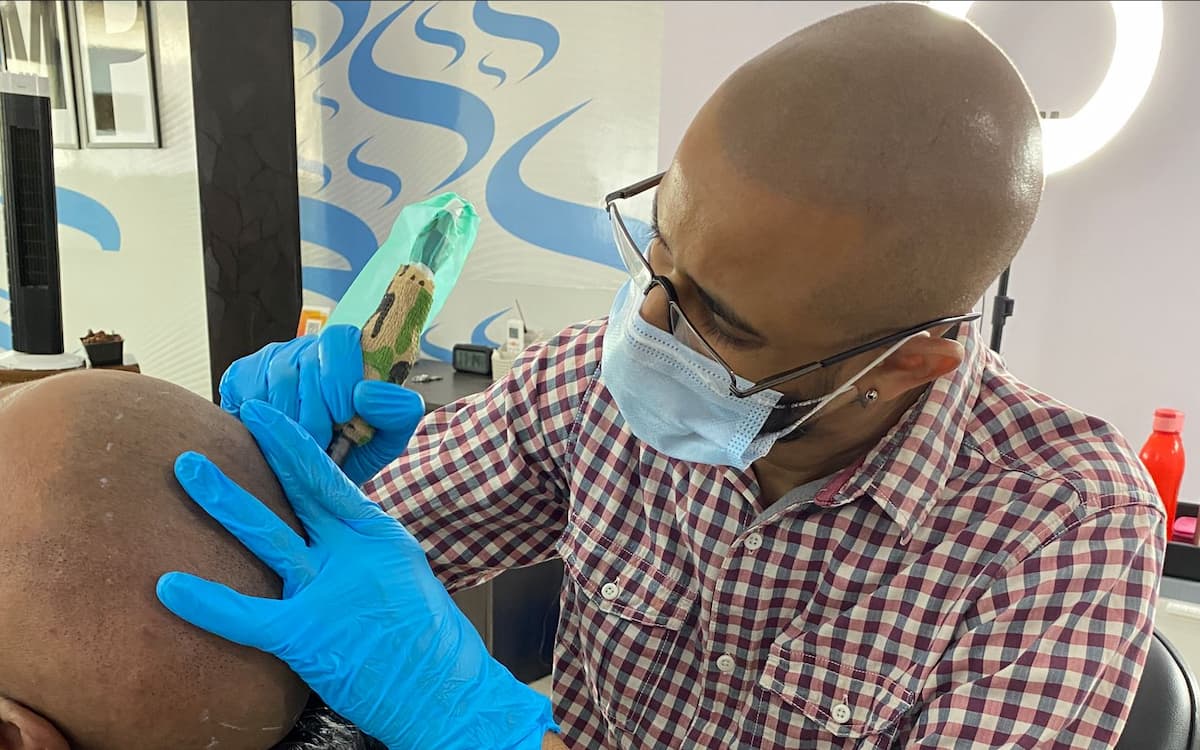
Hair loss can be a frustrating and emotional challenge for many men, especially as it progresses to advanced stages such as Norwood 4 to 7. While hair transplants are often seen as the solution for restoring a full head of hair, many find the results less than ideal with thin, patchy, or unnatural-looking areas that fail to meet expectations.
Understanding why hair transplants struggle to achieve the desired density is crucial if you want lasting, natural results. In this blog, we will explore the biological and practical limits that make dense hair restoration difficult through transplantation alone. More importantly, we will explain how Scalp Micropigmentation (SMP) offers a reliable, non-surgical alternative that can restore the appearance of fullness and boost your confidence, even in cases where transplants fall short.
Understanding the Hair Transplant Density Problem
Hair transplant methods such as Follicular Unit Extraction (FUE) and Follicular Unit Transplantation (FUT) involve moving hair follicles from a donor area, usually the back and sides of the head, to the areas affected by hair loss. In theory, this sounds like the perfect solution. However, in practice, especially in cases of advanced hair loss, these methods face significant limitations that can impact the final results.
1. Limited Donor Supply
One of the biggest challenges is the imbalance between supply and demand. If you are at Norwood stage 4 to 7 or experiencing diffuse thinning across the scalp, the area needing coverage is far larger than the donor area available.
An average person begins life with around 100,000 to 150,000 hair follicles. By the time advanced hair loss sets in, you may have already lost between 60,000 and 100,000 follicles, primarily from the top and crown areas of the head.
The donor area, which is typically the back and sides of the scalp, usually contains between 20,000 and 50,000 follicles remaining. However, it is not possible to extract all of them. Taking too many would cause the donor region itself to appear thin or patchy. In reality, most transplants can safely move only about 12,000 to 20,000 follicles. When compared with the 50,000 or more follicles needed to recreate the appearance of a naturally full head of hair, the shortfall becomes clear.
This is why, in many cases, transplant results, especially for those with severe hair loss, look thin or incomplete. There simply is not enough donor supply to meet the visual demand of a thick hairline and a fully restored crown or scalp.
2. Graft Survival and Growth Uncertainty
Even when the donor hair is extracted and implanted with precision, not all grafts are guaranteed to survive. In ideal conditions, you can expect about 85–90% of transplanted follicles to grow, which means 10–15% may not take root. But reality isn’t always ideal. Factors like poor blood circulation, trauma to grafts during placement, or individual healing differences can push failure rates up to 30% in some cases.
What does this mean for you? Even after a technically successful transplant, you may find that certain areas remain thin, patchy, or don’t reach the density you were hoping for. It’s not just about how many follicles are transplanted, it’s about how many survive, thrive, and grow strong hair over time.
3. Natural Density vs. Transplant Density
A natural head of hair contains around 80 to 120 follicular units per square centimetre, creating the thick, full appearance most people are born with.
By comparison, even under optimal conditions, a hair transplant can typically achieve only 30 to 50 follicular units per square centimetre, and sometimes less. Surgeons cannot place grafts too close together because doing so can restrict blood flow to the scalp, increasing the risk of graft failure or severe complications such as tissue necrosis.
Because of these limitations, a newly transplanted hairline or crown can look sharp and defined initially, but under bright light or when wet, the scalp often becomes more visible, making the hair appear thinner and less natural than expected.
4. The Crown Challenge
The crown, or vertex, is one of the most difficult areas to restore during a hair transplant. This is because the crown naturally requires a higher density to achieve the same visual fullness as the front hairline.
Most people with advanced hair loss already have a limited donor supply. When that limited supply is spread across the entire scalp and into the crown, the result is often underwhelming. The follicles in the crown may be spaced too far apart, leaving it looking patchy or see-through when viewed from above.
Even if the rest of the transplant appears acceptable, a sparse crown can break the illusion of density. This challenge is not due to a lack of surgical skill but is simply a result of biological and mathematical limitations.
5. Diffuse Thinning Makes Transplants Risky
Not all hair loss follows a predictable pattern. In some individuals, thinning occurs across the entire scalp, including the back and sides that are usually considered safe donor zones. This type of hair loss is called Diffuse Unpatterned Alopecia (DUPA).
Hair transplants rely on strong and healthy follicles from these donor zones. If the donor area is also thinning, the transplanted hair will not be stable. Over time, these weaker follicles often thin further, shortening the lifespan of the results.
This is why diagnosing the type of hair loss is essential before committing to a transplant. In cases like DUPA, the chances of achieving long-term success are greatly reduced.
How Scalp Micropigmentation Solves the Density Problem
Scalp Micropigmentation (SMP) is a non-surgical treatment that overcomes the challenges of hair transplants by creating the appearance of a full head of hair without the need for actual hair growth. Instead of moving existing hair follicles, SMP uses tiny pigment deposits to replicate natural hair follicles. This technique creates the illusion of density and coverage, even in areas where hair is absent.
Whether you have had a hair transplant that did not meet your expectations or are dealing with advanced hair loss with limited donor hair, SMP provides an immediate, low-maintenance, and long-lasting solution.
Here is how SMP addresses each major challenge faced with traditional transplants:
1. No Dependence on Donor Hair
SMP does not require any donor hair. It can recreate a natural-looking hairline and provide uniform scalp coverage regardless of how much real hair remains. Whether you are at Norwood stage four or seven, SMP can restore a youthful appearance without relying on healthy follicles.
2. Predictable Results without Waiting
Unlike hair transplants, which depend on the survival and growth of transplanted follicles over several months, SMP produces visible results from the very first session. There is no shedding phase or uncertainty about success. Coverage improves with each session and remains consistent over time.
3. Ability to Create the Illusion of Natural Density
Hair transplants are limited in how densely follicles can be implanted. SMP has no such limitation. Skilled practitioners can apply pigment at high densities to blend seamlessly with existing hair or to mimic the appearance of a closely shaved scalp. This results in a fuller look, even where transplants may struggle to achieve density.
4. Excellent Crown Coverage
The crown is often the most difficult area to restore with transplants. SMP excels here by providing dense, even coverage that integrates naturally with existing hair or previous transplant results. This creates a balanced, natural finish without gaps or patchiness, even under bright light or from overhead views.
5. Effective Solution for Diffuse Thinning and DUPA
Conditions like Diffuse Unpatterned Alopecia pose a challenge for traditional hair transplants because of unstable donor areas. SMP offers a reliable alternative by simulating the look of closely shaved hair across the scalp, regardless of how extensive or uneven the thinning is. The results are uniform, durable, and free from surgical risks or donor hair limitations.
Conclusion
Hair transplants can be a good choice for some men, particularly those in the early stages of hair loss with strong donor areas. But for advanced baldness, limited donor supply, or diffuse thinning, they often fall short in providing real density.
Scalp Micropigmentation overcomes these limitations and delivers an immediate, natural-looking result. Whether you want to improve the appearance of a previous transplant or create the look of full density from scratch, SMP offers a proven, low-maintenance solution.
If density is your goal, SMP is not just another option. For many, it is the answer they have been looking for.
To find out if SMP is right for you, consult a trusted specialist who can guide you through the process and help achieve results that meet your expectations.





